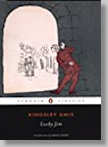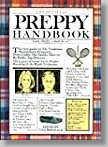"Some people talk to animals. Not many
listen though. That's the problem."
-A. A. Milne
|
| 

| 
Higher education is a bastion of comfort for the initiated; a source of anguish for those left outside looking in. Similarly contradictory is higher education's claim of welcoming open minds, while demanding total conformity. As a new college year begins, here are two selections that offer very different approaches to cracking the code of the ivory-towered set, while remaining entertaining in their own rights.
Shortly after World War II, England was swept by a literary movement that meant to turn polite society on its head. Though similar to what was going on in America with the Beat Generation, England's movement lacked the devil-may-care balls out irreverence of the Yanks'. Decidedly British in style and appeal, it could be regarded as a timid rendition of the movement being propelled on the other side of the pond by Kerouac et al; Beat Generation lite, if you will. Dubbed "The Angry Young Men,"
the British movement was born of novels with a common theme: young men with rebellious natures.
A first of its kind, Lucky Jim takes place at a provincial college outside London. The story's protagonist, Jim Dixon, is a junior faculty member looking to advance his career while putting in as little effort as possible. In modern terms, he is a slacker. His personal life is complicated - complications of his own making - by a love triangle. The girl he wants has a fella, and the girl who wants him, and whom he has a misguided sense of loyalty towards, is a cold fish. His professional life mirrors
his personal triangulation, ever playing the necessary politics to appease his superiors, all the while taking them for fools. It's a glimpse inside the machinations of secondary British education - a good ol' boys club - that puts protocol and conformity ahead of all else. It's a world we sense early in the novel Dixon is ill-equipped for.
Amis' writing lacks the elegance associated with British writers of a generation prior. He is concise, though, writing with a style that's to the point and often comical. As the novel proceeds, Dixon's rebelliousness becomes increasingly daring to the point it can no longer be ignored by the stiff upper lips who surround him. The more daring he becomes, the more laughable the stereotype of the proper British gentleman (of which there is no shortage) becomes, until he learns first-hand how insubordination is dealt with by polite society.
In the end, Lucky Jim is a story about pushing boundaries, and the consequences of pushing them too hard. In the vein of the Beat Generation, there are no regrets on the part of Amis' protagonist, no apologies or sentimental reflection. Just that what's done is done, life goes on, and a sense that even as unlikable a character as Dixon is - or perhaps precisely because of it - he'll escape, angry, but unscathed.
When Lisa Birnbach came out with The Official Preppy Handbook in 1980, it took the publishing world by storm. Not only was she writing for a seemingly small niche, it was a closed niche that the general public had no invitation to join, much less interest to. Thirty-eight weeks at the top of The New York Times bestseller list, however, proved those assumptions wrong.
Recipe for Success
I should have clued in to it sooner. While The Handbook lists colleges that are a must for preppies, it's not a guide for selecting a school. (It also contains listings of the "right" K-12 prep schools, and the famous preppies who attended them, but that doesn't make it any more of a guide for school selection than a Chilton's auto repair manual is for selecting a car). It's all good information - and in Birnbach's hands, hella entertaining - but it's hardly an aid for college selection, and isn't meant to be. What it is, is a highly entertaining look at the preppy phenomenon that had heretofore been out of sight and mind of most Americans.
Hard Truth
Re-reading The Handbook as an adult, I find it even more entertaining than that first read-through. Years do that. Now that I'm older, I've also got a new appreciation for Birnbach's ability - while keeping it light - to peel back the layers of prep for an honest reveal of its core. From where to be seen, to what clothes to wear - even how one speaks - prep is all about conforming. Individual expression has no place in prep, unless it conforms to pre-determined norms. For instance, a preppy can wear offbeat, loud clothing, but only one item of offbeat loud clothing, preferably the pants. There is perhaps not a single other group in America that conformity is so demanded of. And conform they do.
Birnbach describes to a tee preppy families I have known over the years, right down to their shopping habits. The friend who gave me this book so many years ago, I always thought to be frugal. She preferred mending a 20-year old sweater from L.L. Bean over replacing it. That wasn't frugality; that was preppiness, pure and simple. Even her furniture - and that of her mother's - conformed to preppy standards. So, while The Handbook is a fun and hilarious read, it's peppered throughout with truth enough to appeal even to whom it exploits: preppies.
It's that kind of truthfulness that lands a book like The Official Preppy Handbook atop The New York Times bestseller list. It's Birnbach's entertaining tongue-in-cheek delivery that keeps it there for nine months.
posted 10/28/22
 TOP |

